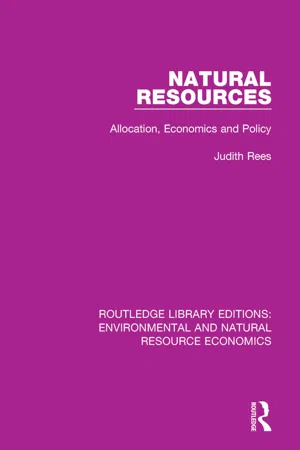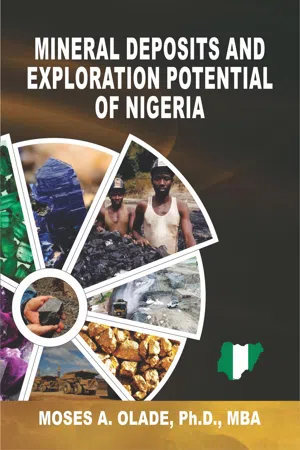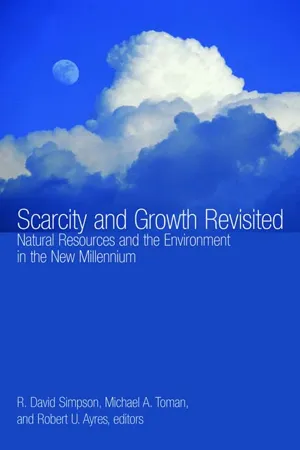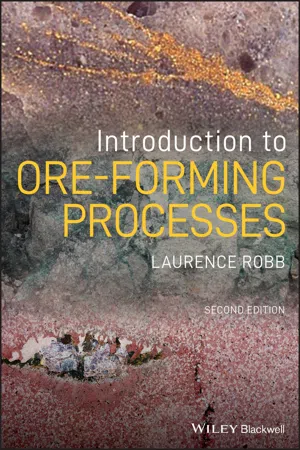Geography
Mineral Supply
Mineral supply refers to the availability and distribution of naturally occurring inorganic substances that have economic value. It encompasses the extraction, processing, and distribution of minerals such as metals, ores, and precious stones. Factors influencing mineral supply include geological formations, technological advancements, market demand, and environmental regulations. Understanding mineral supply is crucial for economic development, industrial production, and resource management.
Written by Perlego with AI-assistance
Related key terms
Related key terms
1 of 4
Related key terms
1 of 3
4 Key excerpts on "Mineral Supply"
- eBook - ePub
Natural Resources
Allocation, Economics and Policy
- Judith Rees(Author)
- 2017(Publication Date)
- Routledge(Publisher)
3Minerals: distribution, production and economicsIntroduction
Few would deny that mineral exploitation has played an important role in generating industrial development and economic growth. This is not, however, to suggest that the existence of minerals per se has any deterministic power over the scale or the location of economic development. To suggest as much ignores the crucial role that man and his demands, technology and institutions play in imparting resource value to ‘neutral stuff. Before minerals can attain any value or generate any growth, they have to be located, extracted and converted into usable products for which a demand exists, and delivered to consumers in the required quantities and qualities at the needed times and locations. By the time they are usable most must be regarded as manmade products, marketable only after the investment of considerable amounts of capital, energy and labour.Patterns of mineral exploration, exploitation, refining and trade cannot be explained simplistically in terms of the physical endowments of various countries, but require study of the way resource investment decisions are made and of the factors influencing the decision-making process. Who makes such investment decisions? What are their objectives? And how far are they subject to political pressures? These are all important questions which must be addressed during any meaningful attempt to understand mineral developments, their location and scale. The operations of mining corporations, international financial institutions, mineral purchasing companies and governments are critical factors explaining the spatial pattern of mineral production. In the same way, study of the role of natural resources as a generator of economic development must go far beyond the outlining of patterns of ownership and trade. There is a need to assess the way in which market structure, corporate and institutional behaviour and government policies influence not only the value of individual mineral deposits, but also the proportion of the generated wealth and growth which accrues to the producer states. - Moses A OLADE(Author)
- 2020(Publication Date)
- Prescott Resource Publishers(Publisher)
Chapter 1Introduction to Mineral DepositsDefinition of Terms
Mineral resources are useful earth materials of sufficient quantity and adequate quality to be extracted and used for human benefit. Since time immemorial, economic minerals have been exploited and used as raw materials for industrial production and to generate revenue for the national economy through export to other countries. Mineral resources can be subdivided into two broad groups, according to their form of occurrence: (1) Solid Minerals and (2) Liquid Fuels (petroleum). When solid minerals of economic value are concentrated in the earth’s crust in sufficient quantities to be of extractable, they are described as mineral deposits. Solid mineral deposits can be subdivided into three types: metallic, non-metallic, and energy minerals.The total mineral endowment of a nation or region consists of two major parts: identified resources and undiscovered resources. Identified resources are those resources whose location, grade, quality, and quantity are known or can be estimated from specific geological information. In contrast, undiscovered resources are those whose existence is extrapolated based on broad geological knowledge. Mineral reserves refer to the portion of an identified mineral resource that can be mined at a profit. Private investment is a major driving force of mineral resource development in a capitalist system, and the desire to extract minerals at a profit becomes a paramount consideration in evaluating expected returns on investment.Mineral resources are unique among other natural resources because they are not only of instant value but also are non-renewable- eBook - ePub
Scarcity and Growth Revisited
Natural Resources and the Environment in the New Millenium
- R. David Professor Simpson, Michael A. Professor Toman, Robert U. Professor Ayres, R. David Professor Simpson, Michael A. Professor Toman, Robert U. Professor Ayres(Authors)
- 2012(Publication Date)
- Routledge(Publisher)
Nevertheless, societies’ dependence upon minerals has resulted in periodic concern about the adequacy of mineral supplies to continue to support the economy. This concern has been rooted in experiences as diverse as shortages of minerals in wartime, depletion of individual mineral deposits and even mining districts (Hewett 1929), and rapid increases in mineral consumption when countries industrialize. These experiences have sparked periodic debates about the abundance or scarcity of mineral resources.Addressing such questions has been particularly difficult because the concept of a mineral resource involves both geologic and economic aspects and because knowledge about the earth and future economic conditions is limited. On the one hand, mineral deposits are physical entities that form as the result of geologic processes and are therefore finite and exhaustible. On the other hand, the amount of a mineral commodity that will be produced in the future is dependent on future costs of discovering and processing new mineral deposits, recycling used materials, and developing substitute materials (Tilton 1996). Many debates about mineral scarcity have taken place because participants did not appreciate both the physical and economic aspects of mineral resources.The debates about the adequacy of future mineral supplies that took place in the 1970s illustrate this lack of understanding. The twentieth century was an era of unprecedented metal availability due to geologic and economic circumstances. The settlement of Australia, Canada, and the western United States, and colonial-era mineral exploration in Africa in the second half of the nineteenth century, led to the discovery of an unprecedented number of mineral deposits that provided abundant, high-quality minerals throughout the twentieth century. In addition, innovations in mining, such as Daniel jackling's recognition that low-grade porphyry copper ores could be profitably mined by using economies of scale, as well as innovations in mineral processing and metallurgy, have reduced the cost of producing metals and added to the inventory of very large deposits that can be profitably processed. Further, advances in information processing and search technologies used in mineral exploration, including the widespread application of geophysical tools, geochemical methods, satellite imaging, and mineral deposit models, increased the efficiency of mineral exploration. - eBook - ePub
- Laurence Robb(Author)
- 2020(Publication Date)
- Wiley-Blackwell(Publisher)
Introduction: Mineral Resources
Topics
General introduction and aims of the book A simple classification scheme for mineral deposits Some important definitions- metallogeny, syngenetic, epigenetic, mesothermal, epithermal, supergene, hypogene, etc.
- periodic table of the elements
- tables of the main ore and gangue minerals
- geological time scale
- enrichment factors required to make ore deposits
- how are mineral resources and ore reserves defined?
- sustainability
- environmental responsibility
Introduction and Aims
With a global population in 2019 of close to eight billion people, and this figure set to increase to some ten billion by 2050, it is apparent that the world's economies are under growing pressure to meet the demands of an increasingly materialistic lifestyle. The unprecedented growth of human population over the past century has resulted in a dramatic increase in demand for, and production of, natural resources – it is therefore evident that understanding the nature, origin, and distribution of the world's mineral deposits remains a vital and strategic topic. The discipline of “economic geology,” which covers all aspects pertaining to the description and understanding of mineral resources, is, therefore, one which traditionally has been, and should remain, a core component of the university earth science curriculum. It is also the discipline that underpins the training of professional earth scientists working in the minerals and related industries of the world. Unfortunately, a tendency at many universities in the recent past has been to treat economic geology as a vocational topic, and to provide instruction only to those individuals who wished to specialize in the discipline or to follow a career in the minerals industry. There has been a trend, at least in many parts of the world, to sideline economic geology both as a taught discipline and a research topic.
Index pages curate the most relevant extracts from our library of academic textbooks. They’ve been created using an in-house natural language model (NLM), each adding context and meaning to key research topics.
Explore more topic indexes
Explore more topic indexes
1 of 6
Explore more topic indexes
1 of 4



